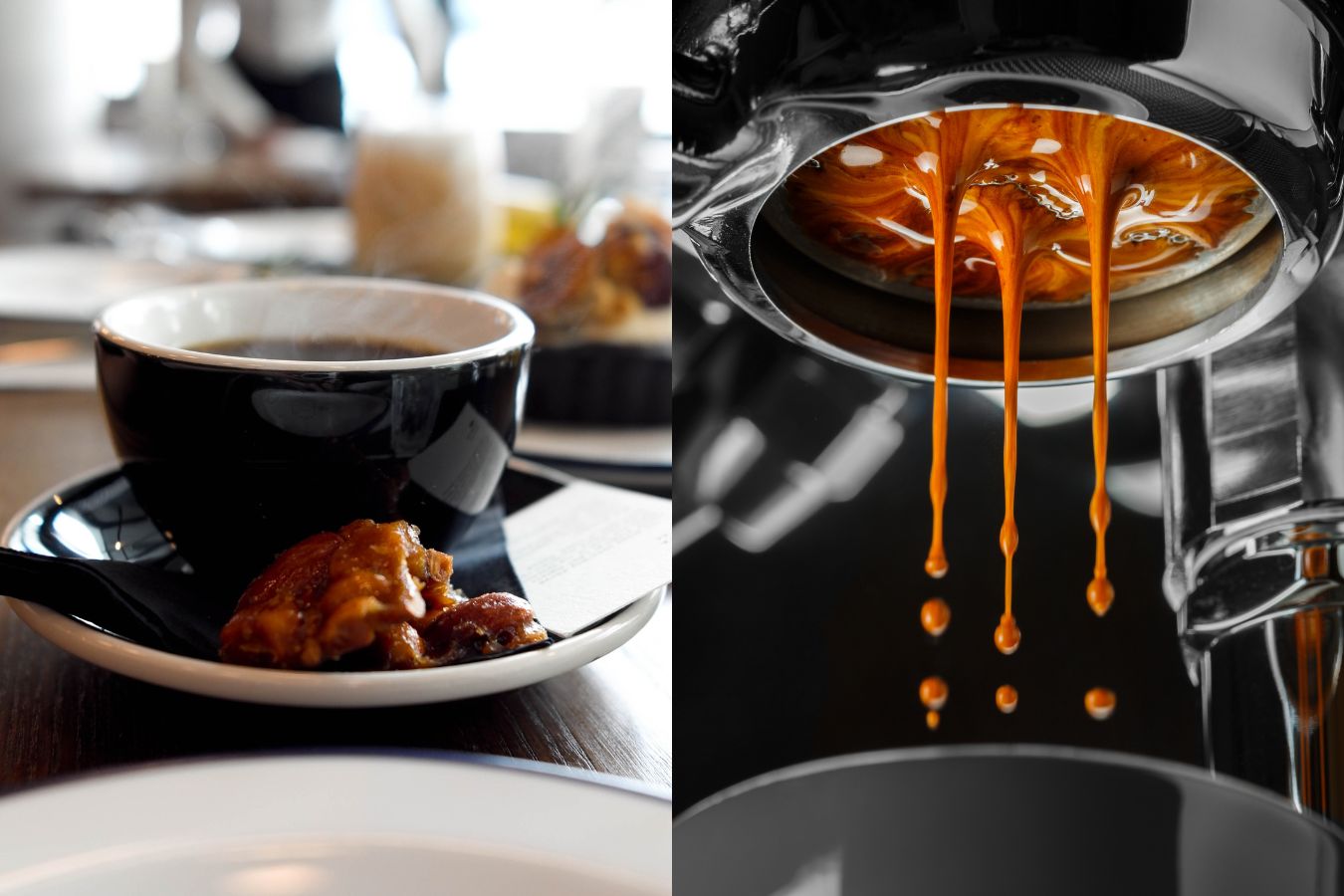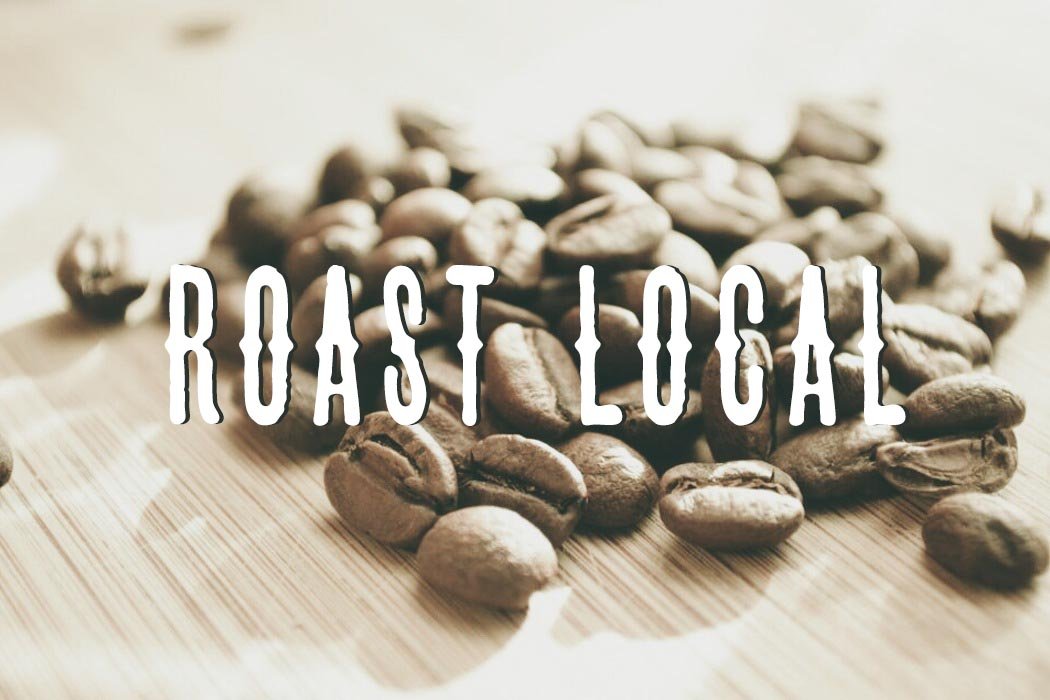Top Cafés Serving SOE Single Origin Espresso Near You
Top Cafés Serving SOE Single Origin Espresso Near You
Blog Article
Understanding Coffee Beans: the Journey From Coffee to Blended Coffee Beans

The Beginnings of Coffee: An International Perspective
While you could believe of coffee as a modern staple, its beginnings trace back centuries, linking with societies throughout the globe. The tale starts in Ethiopia, where legend says a goat herdsman called Kaldi discovered the energizing effects of coffee beans after discovering his goats frolicking vigorously after eating them. This sparked passion, bring about coffee's spread to Arab investors who treasured the brewed beverage. By the 15th century, it got to Persia, Egypt, and Turkey, where coffeehouses ended up being social centers for conversation and society.
As trade paths expanded, coffee made its way to Europe in the 17th century, rapidly getting popularity. It transformed from a magical beverage right into a day-to-day ritual, intellectual exchanges and inspiring celebrations. Each culture added its special twist to coffee preparation, enriching its background. This international trip highlights how coffee links us, going beyond boundaries and joining diverse traditions through a basic bean.
Farming and Harvesting of Espresso Beans
As coffee's trip developed, the emphasis changed to the farming and harvesting of particular bean ranges, especially those utilized for coffee. You'll find that coffee beans commonly originate from Arabica or Robusta plants, each offering distinct tastes. The perfect growing problems consist of high elevations and rich, well-drained soil, which enhance the beans' quality.
During the harvest, selecting approaches vary. Timing is vital; you want to harvest when the cherries reach peak perfection for optimum taste.
As soon as collected, the beans are planned for processing, which is necessary in establishing their final taste. Understanding the cultivation and harvesting procedures offers you understanding right into what enters into your favorite coffee, enriching your admiration for every mug.
Processing Approaches: From Cherry to Bean
Since you have actually learnt more about harvesting espresso beans, let's check out how those cherries change right into the coffee beans you love. You'll see just how different harvesting strategies effect flavor, followed by the important steps of fermentation and drying out. Lastly, we'll damage down the milling and grading process that identifies your coffee's quality.
Collecting Methods Explained
When it pertains to coffee, understanding harvesting strategies is important, given that they directly influence the flavor and top quality of the beans you take pleasure in. There are two key methods: discerning picking and strip picking. Careful choosing involves hand-picking just ripe cherries, guaranteeing you get the best top quality beans. This technique usually leads to a richer taste account, though it's even more labor-intensive. On the other hand, strip picking methods gathering all cherries at once, no matter of ripeness. While it's quicker and less expensive, this can lead to a mix of tastes, influencing the last product. Eventually, the selection of gathering method can considerably affect your coffee experience, so it deserves recognizing how those beans made it to your cup.
Fermentation and Drying
After harvesting, the next steps in processing coffee beans play a considerable role in shaping their taste. You'll find that fermentation is vital, as it aids break down the mucilage bordering the beans, improving their preference profile. Depending on the approach, this procedure can last from a few hours to several days, with differing results based on temperature and moisture.
Once fermentation is full, drying out complies with, which is similarly important. You can pick from sun-drying or mechanical drying methods. Sun-drying allows the beans to soak up flavors from the setting, while mechanical drying out warranties consistent moisture levels no matter weather. Proper drying is necessary to avoid mold and protect the beans' high quality, inevitably influencing your cup of coffee.
Milling and Grading Process
As fermentation and drying out established the stage for taste growth, the milling and grading procedure warranties that only the ideal coffee beans make it to your cup. This stage involves getting rid of the outer layers of the coffee cherry, consisting of the parchment and husk. Top notch beans get a higher grade, resulting in a richer coffee experience.
Toasting Strategies: Unlocking Taste Potential
When you roast coffee beans, the approach you select can significantly affect the flavor profile. Recognizing the partnership in between time, temperature level, and roasting techniques is essential to revealing the capacity of your mixture. Allow's discover how these aspects integrated to create the ideal mug.
Toasting Approaches Explained
While you may assume that all coffee roasting approaches yield the very same outcomes, the reality is that each technique reveals unique taste capacities in the beans. You can select between methods like drum toasting, air roasting, and even standard frying pan roasting. Drum toasting makes use of a rotating drum to evenly disperse warmth, enhancing caramelization and producing a well balanced flavor. Air roasting, on the various other hand, flows warm air around the beans, promoting a lighter roast with pronounced level of acidity. Pan roasting permits hands-on control however requires constant focus to prevent burning. Each method has its nuances, so explore various methods can assist you discover the best roast that straightens with your preference preferences. Enjoy the trip of locating your suitable cup!

Effect On Taste Account
Different toasting techniques not only influence the procedure yet likewise greatly impact the taste profile of the coffee beans. When you choose a light roast, you'll experience bright acidity and flower notes, showcasing the bean's beginning. In contrast, a medium roast equilibriums level of acidity with sweetness, commonly revealing chocolatey undertones. Dark roasts, on the various other hand, draw out strong, smoky tastes, often masking the bean's one-of-a-kind attributes. Each method reveals various oils and compounds, leading to a large range of flavors. By try out various toasting styles, you can discover which accounts reverberate with your taste buds. Comprehending these nuances assists you appreciate the artistry behind your cup of coffee, enhancing your total experience with every sip.
Time and Temperature Elements
To release the complete flavor possibility of coffee beans, both time and temperature during the toasting process play substantial duties. When roasting, you'll discover that higher temperature levels can promptly create flavors, however if you hurry it, you might finish up with burnt notes. On the other hand, reduced temperatures permit a more gradual taste advancement, showcasing the beans' distinct characteristics.

Timing is just as important; prolonging the roast too long can result in a loss of level of acidity and brightness, while as well short a roast straight from the source may leave the beans underdeveloped. Finding that pleasant area calls for method and testing. By adjusting these factors, you can reveal the abundant, complicated flavors hidden within each bean, producing a truly amazing coffee experience.
The Art of Mixing: Crafting One-of-a-kind Coffee Profiles

Beginning by picking explanation a base coffee that provides a strong structure. Pick corresponding beans to improve specific taste notes. An intense Ethiopian bean can bring fruitiness, while an abundant Brazilian coffee adds body. Experimentation is vital-- don't be afraid to change ratios up until you locate your excellent account.
As you blend, remember that each mix informs a tale. You're not simply making coffee; you're developing an experience. So, take your time, taste frequently, and appreciate the trip of finding your trademark blend.
Developing Approaches: Just How Prep Work Affects Flavor
Mixing coffee opens a domain of flavor opportunities, yet just how you brew that blend can significantly influence your last cup. Various brewing approaches extract unique tastes and scents, so it's important to pick carefully. For example, a French press permits sediments and oils to continue to be, developing a rich, full-bodied experience. On the other hand, a pour-over highlights the coffee's clarity and brightness, perfect for showcasing delicate notes.
Espresso, with its high pressure, creates a focused shot that emphasizes sweetness and crema. If you favor a lighter mixture, take into consideration a cool mixture approach; it produces a smooth, less acidic preference.
Adjusting variables like water temperature level, grind size, and brew time can change your coffee's profile. Welcome the art of brewing to find the tastes concealed in your coffee blends.
The Future of Coffee: Sustainability and Technology
As the coffee industry evolves, sustainability and development are becoming necessary for addressing ecological obstacles and conference customer needs. You'll notice that more coffee firms are adopting eco-friendly methods, from sourcing beans morally to carrying out sustainable farming methods. These changes not just help the earth however likewise improve the quality of the coffee you enjoy.
You could see innovations like naturally degradable packaging and water-saving developing approaches that reduce waste. Advanced modern technology, such as blockchain, is also becoming popular, making sure openness in the supply chain, which permits you to trace your coffee back to this website its beginnings.
In enhancement, spending in neighborhood areas and supporting farmers with fair profession efforts cultivates a much more lasting coffee ecosystem. As you sip your next cup, keep in mind that your selections can add to a brighter future for coffee. By going with lasting brands, you're not simply delighting in a drink; you're making a favorable influence on the globe.
Regularly Asked Inquiries
What Is the Difference Between Arabica and Robusta Beans?
Arabica beans are smoother, sweeter, and have a higher level of acidity, while robusta beans are stronger, more bitter, and consist of even more high levels of caffeine. You'll observe these distinctions in taste and scent when brewing your coffee.
How Does Elevation Affect Coffee Bean Flavor?
Altitude influences coffee bean taste considerably. Higher altitudes produce beans with brighter acidity and complex flavors, while lower altitudes frequently generate beans that are heavier and much less nuanced. You'll observe these differences in your mug!
What Are the Wellness Advantages of Drinking Coffee?
Consuming alcohol coffee can enhance your power, enhance psychological emphasis, and also boost physical performance. It's rich in antioxidants, might reduce the danger of certain conditions, and can advertise a much healthier metabolism when consumed in small amounts.
Can Coffee Beans Be Recycled for Brewing?
Yes, you can reuse coffee beans for brewing, but the flavor may be weak. If you appreciate experimenting, attempt reusing them in various means, like chilly brews or including in shakes for an added kick.
Exactly how Should I Store Coffee Beans for Quality?
To maintain your coffee beans fresh, keep them in an airtight container in an amazing, dark location. Avoid exposing them to heat, light, or dampness, as these variables can quickly deteriorate their taste and fragrance.
Recognizing Coffee Beans: the Journey From Coffee to Blended Coffee Beans.
Now that you have actually learned concerning collecting coffee beans, allow's explore just how those cherries change right into the coffee beans you love.When you roast coffee beans, the technique you select can significantly affect the flavor account - Single Origin Espresso.While you could think that all coffee toasting techniques generate the same results, the fact is that each technique reveals one-of-a-kind flavor potentials in the beans.Different toasting approaches not just influence the process however also considerably influence the taste profile of the coffee beans
Report this page